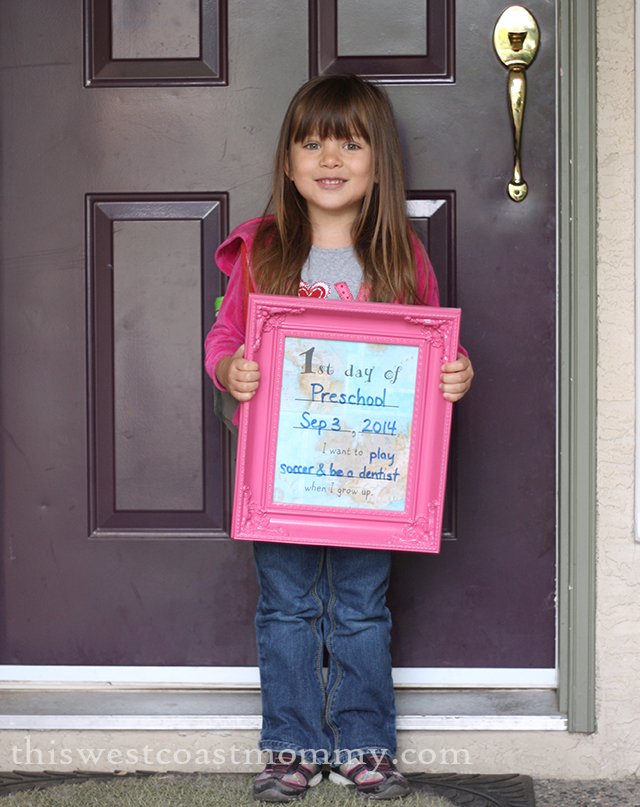When I was three or four, I desperately wanted to be a school bus driver. At various points in elementary school, I also wanted to be a child psychologist, a teacher, a paleontologist, and for a very brief time an astronaut (until I realized I got motion sickness on the tire swing).
Fast forward 25 years, and this is Tee on her first day of preschool. Last year she wanted to be a soccer player and a teacher, and this year her career plans have changed to becoming a dentist (but still stuck on that soccer thing, despite never having played a game). Of course, her dream job changes all the time. Yesterday she told me she wanted to own a zoo so she could ride the giraffes (really?).

I want her to dream big, but I can’t help but worry about how much those dreams and her post-secondary education will cost. I hope she’ll stay home with us while she’s in school (and coincidentally save on room and board costs), but even just tuition and books are a lot to budget for. I remember how much it cost when I was in school, and I hate to think what it’ll be in (gulp) 2028!
And that’s just one of my girls. Who knows what Kay will want to be when she grows up? She’s been super focused on doing puzzles lately – maybe she’ll want to be an engineer! I like to think my kids are really smart (just like most parents, I suspect), and if they get that invitation to MIT or Johns Hopkins University or wherever, I don’t want their choices limited by finances or their futures bogged down by a massive student debt.
I’ll tell you this too. Long before they had any dreams, I had dreams of my own. While I was still waiting to meet them, I imagined who they would be. Who they would look like, what their interests and passions would be, who they would become as children, teenagers, adults, and even as parents themselves. From eating right and prenatal care in pregnancy, to exploring their interests with swimming, gymnastics, and karate classes, to researching and visiting local preschools, I wanted to do everything possible to support their bright futures.
Even before Tee was born, I knew we needed to set up an account as soon as possible to save money for her university education and to support her big dreams.

In the US, parents can open a 529 plan which offers tax and financial aid benefits for K-12 and post-secondary tuition. Besides personal savings, check to see if your state offers a grant program that either matches contributions or offer start-up “seed” money for 529 plans. Families with children under 17 years of age who qualify for the child tax credit can reduce their tax liability by up to $2,000 per child. Those tax savings can then be reinvested into a 529 to help families save for college.
Here is Canada, all beneficiaries in an Registered Education Savings Plan (RESP) can be eligible for the Canada Education Savings Grant which tops up annual RESP contributions by 20%, up to $500 per year per child, up to a maximum of $7200 over the lifetime of the plan. The more you save, the more grant money your kids receive! Qualifying families are eligible for additional CESG monies as well as the Canada Learning Bond.
Different provinces have their own grant programs too. Here in BC, we have the British Columbia Training and Education Savings Program (BCTESP) slated for early fall 2015. Every BC resident born on or after January 1, 2007 will receive a $1200 grant into their RESP once they turn six.
Invested early, all those savings and grant monies will grow into a big help when our kids are deciding what they want to be for real!

Disclosure: This is a sponsored conversation. All opinions expressed are completely honest and my own. Your experience may differ.








She looks so proud